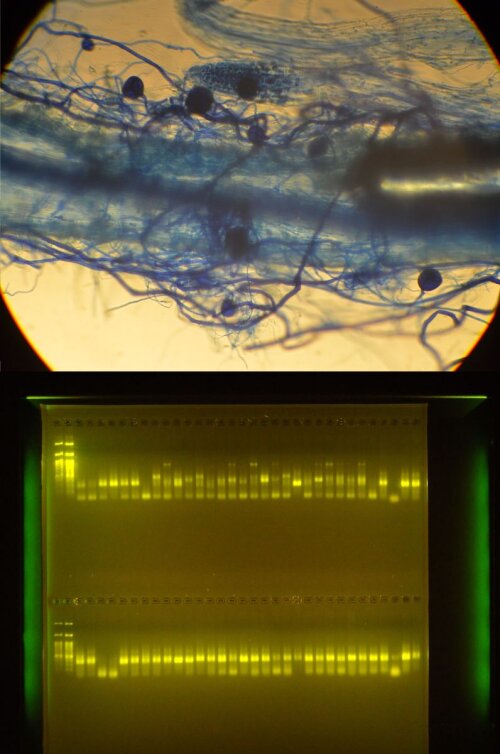Current research:
EUK-seq:
In this first project we aim to assess seasonal variation in soil food web structures through high-throughput sequencing. Soil food webs consist of both prokaryotes and eukaryotes. Although a plethora of different studies looking at soil microbial diversity through high-throughput sequencing exist, most have focused their efforts on a specific microbial group. This is especially true for eukaryotic groups. However, this approach fails to discern how these different microbial groups relate to one another in terms of relative abundance. Therefore, we propose to sequence all soil eukaryotes (with an emphasis on protists and fungi) together. This way, we will gain a better understanding of how shifts within one group affect the others. To get a sufficiently diverse view of microbial food webs, we will use a number of sampling sites from subarctic, temperate, mediterranean and subtropical regions. On top of this, samples from two seasons will be used to assess the presence of seasonal variation in food web structure.
Participants: Erik Verbruggen, James Weedon, Ivan Janssens, Stefan Geisen, Pere Roc, Jeff Powel, Josep Peñuelas, Bjarni D.Sigurdsson, Matthias Peichl, Bernard Heinesch, Steven Dauwe, Niki Leblans

Phenology Underground:
This second project seeks to investigate seasonality of soil food webs in further detail, and link this seasonality to ecosystem characteristics. To this end we will perform an extensive survey of the seasonality of soil microbial communities in a range of ecosystems, varying in climate and land-use. For a greater resolution in these seasonal changes, monthly soil samples have been taken for a period of two years. By including field-sites with established ICOS (Integrated Carbon Observation System) ecosystem monitoring infrastructure (see here for more info on the ICOS infrastructure) we will be able to investigate whether seasonal patterns in below-ground communities are associated with the annual cycles of vegetation (bud burst, peak photosynthesis, leaf fall), and whether they can be linked to seasonal patterns in ecosystem functions such as ecosystem gas exchange.
Participants: Erik Verbruggen, James Weedon, Ivan Janssens and partners at 13 ICOS Europe sites
Development and reaction to disturbance of soil food webs:
In this third project we adopt an experimental approach to investigate the development of soil microbial food webs, and how they respond to repeated disturbances. The disturbance of choice is a drought period, as this is a very severe disturbance to the soil food web, which is easily achievable as the water regime is already being controlled for the experiment. The experiment will run for two years, and during every year there are drought treatments. We have chosen two plant species, which will function both as a substrate for the microbial food web and as an indicator of productivity. We selected a grass species (Holcus lanatus) and a legume (Trifolium pratense) as our species of choice. We sterilized soil by pasteurization and inoculated the sterilised soil with either a microbial wash, a microbial wash with one mycorrhizal species or a microbial wash and three mycorrhizal species. These treatments were selected as we hypothesise that mycorrhiza play a key role in the development of soil food webs and might also play an important role in the food web’s resistance to drought. Soil samples are taken regularly to closely monitor changes in the microbial food web as well as other important soil characteristics such as water content, pH and nutrients. The stomatal conductance and mortality of the plants is monitored during the drought periods, and at the end of every year the total aboveground biomass of both plant species is harvested.
Participants: Erik Verbruggen, James Weedon, Evelyne Elst, Marcel van der Heijden
